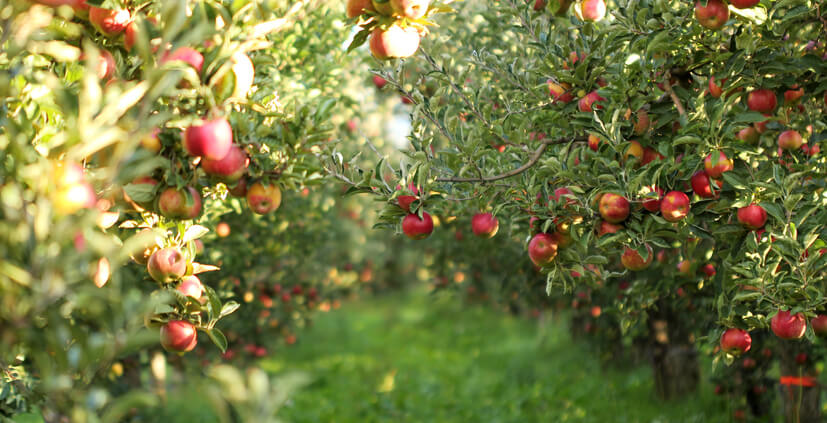Codling Moth

The codling moth Cydia pomonella is an economically important pest of many pome fruits including Apple, Pears, Crab Apple, Quince, Hawthorn, Apricot, Plum, Peach and Cherry.

It is distributed across the Europe, Asia, United States, Mexico and Mediterranean countries. The larvae penetrate the fruit skin and bore through the core end feed up to the seed cavity. If an infestation of Cydia pomonella is left untreated then there is a risk of 95% crop loss.
Biology
Adult moths have a wingspan of 16 to 19 mm. There are very obvious and characteristic brown oval markings on the wing, surrounded by two golden brown lines, tending towards the bronze, on the grey fore wings. Hind wings are a reddish brown and are delicately ciliated.
Adult females lay between 30 and 70 eggs. These are flat and oval in shape, and translucent to white in colour. Just before hatching the dark head of the larvae is visible. Eggs will hatch after 6-10 days.
Larvae are 1-2cm long and pink with a brown head in colour. They develop through 3-5 instars over a period of approximately 5 weeks.
The pupal stage lasts 7-30 days depending on environmental conditions such as temperature. Pupae are brown and around 1.5cm in length. Pupation occurs in protected sites.
Nature of Damage
- Damage is caused by the larvae tunnelling into the fruit to feed on the seeds.
- Brown frass collects outside the entry hole of the tunnelling larvae.
- Early fruit which is attacked by this pest will drop prematurely.
Monitoring
Pheromone for Codling Moth, Cydia pomonella
Russell IPM manufacture and supply pheromone lures, traps and complete monitoring systems for Codling moth, Cydia pomonella. Regular monitoring through use of pheromone traps gives early warning of the infestation and also exhibits the density of the insect population to inform successful IPM strategies.
Pheremone
Russell IPM manufacture and supply pheromone lures, traps and complete monitoring systems for Codling moth, Cydia pomonella. Regular monitoring through use of pheromone traps gives early warning of the infestation and also exhibits the density of the insect population to inform successful IPM strategies.
Lures
Store the pheromone in a cool, dry place. Service life may vary from 3-36 months depending on the storage temperature. See data sheet for details
Trap Selection
The Delta trap or MothCatcher are the most sensitive trap to use for monitoring this insect. The MothCatcher is more suitable dusty conditions or in locations with a high moth population density. Do not re-use the trap to monitor different insects as this may lead to mixed catches.
Trap Density
Place traps in a grid pattern within the orchard at a rate of 1 trap every 5 ha for small scale orchards and 10 traps every 2-4 hectares for larger holdings.
Trap Position
Place each trap within the tree canopy at approximately 2.5 m high, ensuring that the trap entraces are not blocked by foliage or developing fruit.
Data and Interpretation
Collect data weekly from the start of the flight of the over wintering generation. During the height of the population more frequent reading may be needed. Decisions on pesticide application should not be taken solely on the trap catch data. Climatic and biological considerations should be taken in account.
